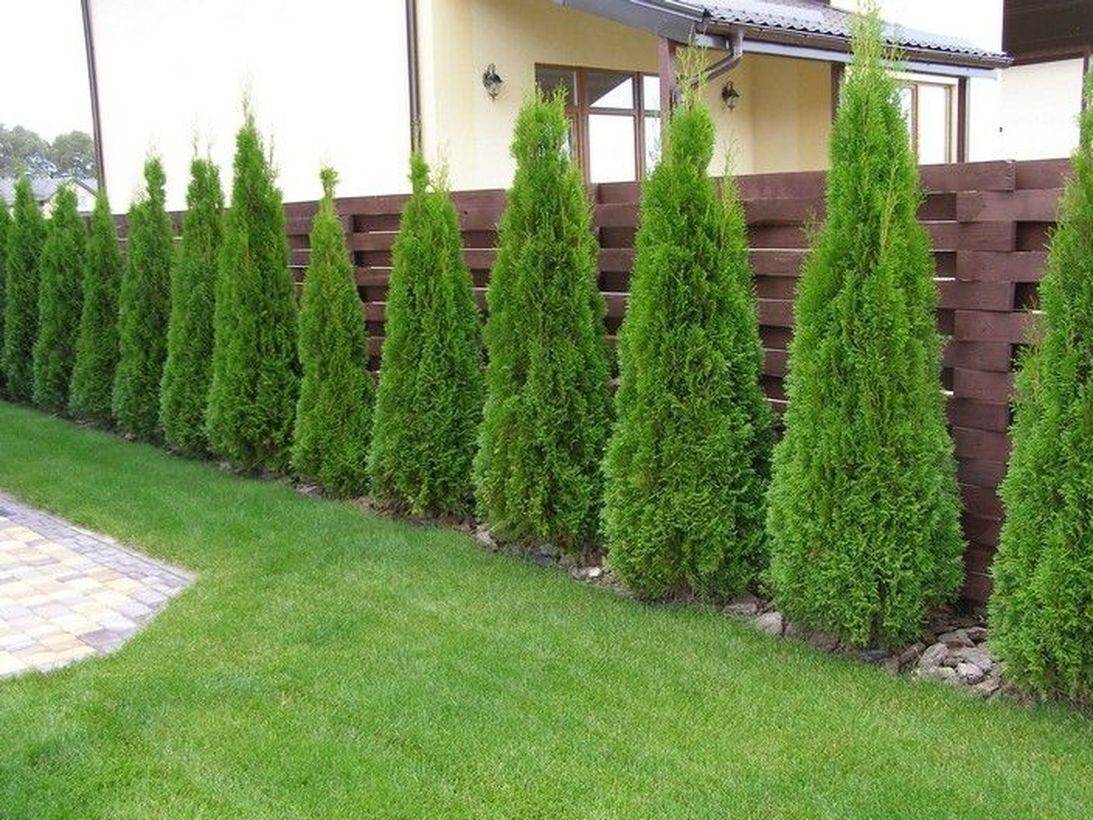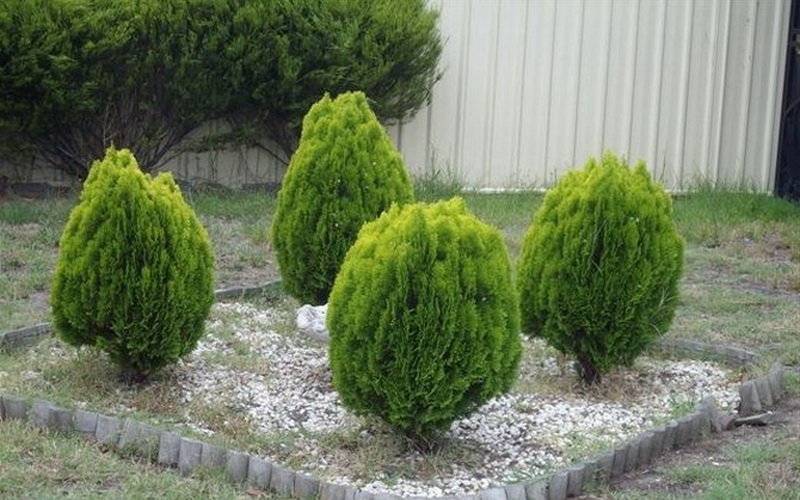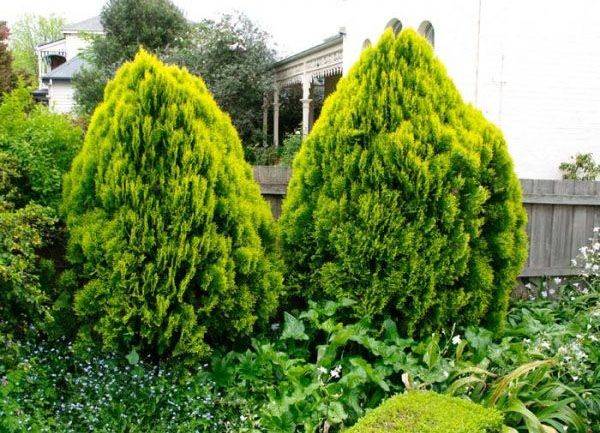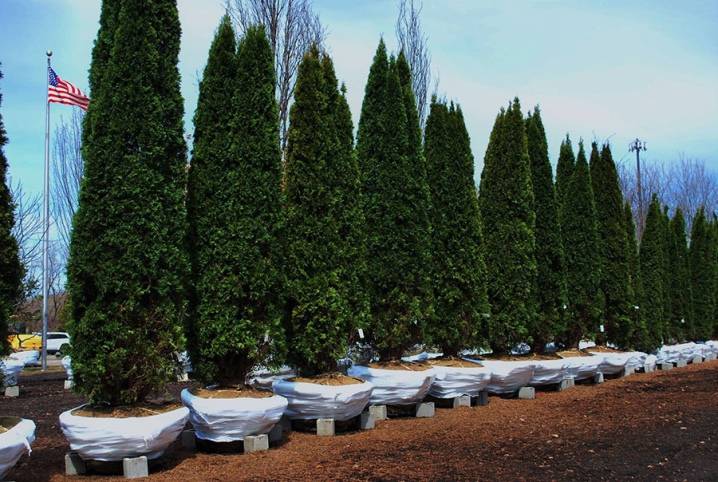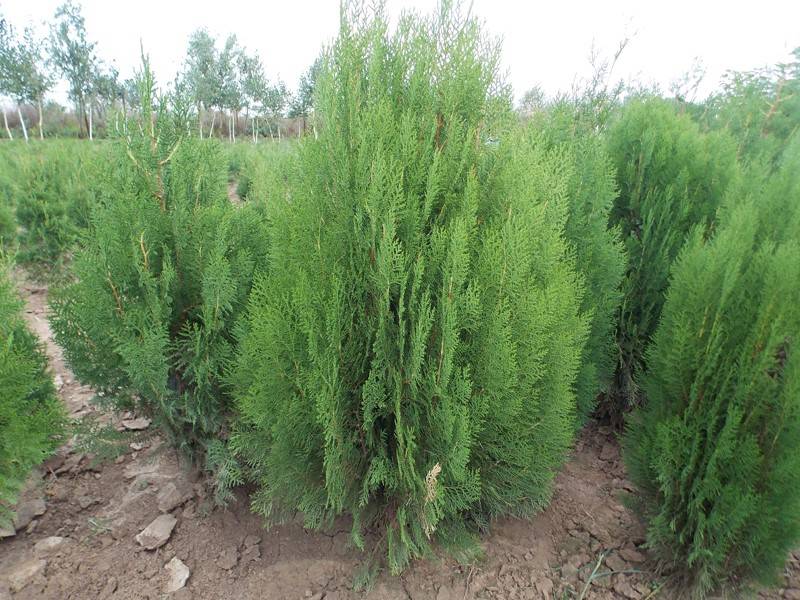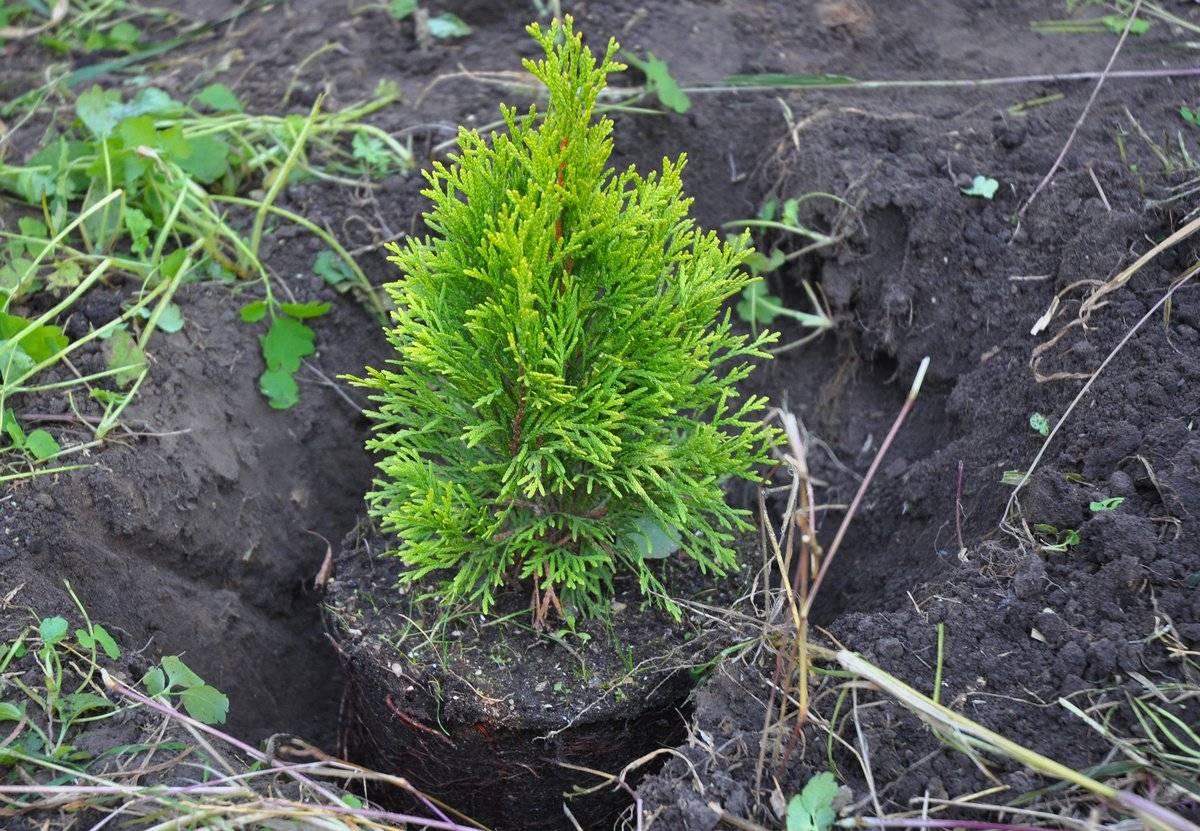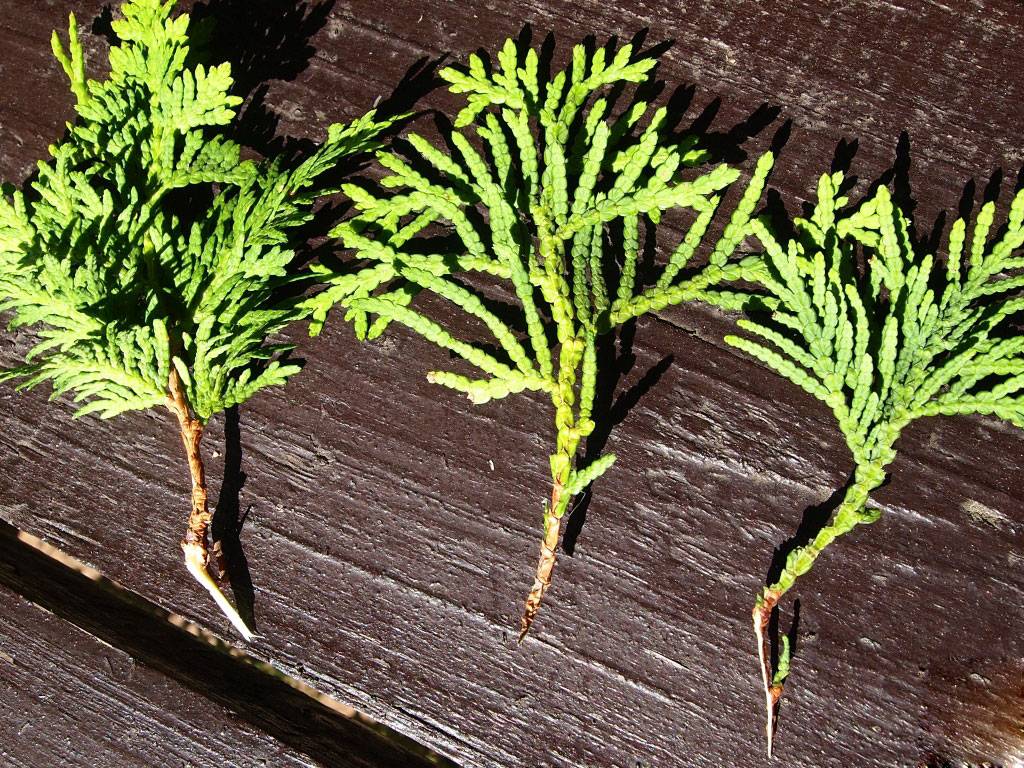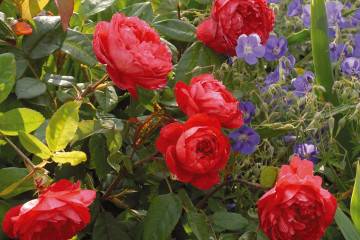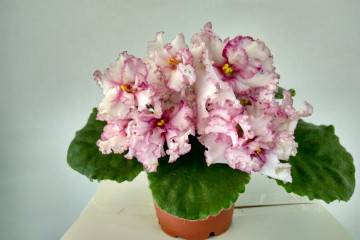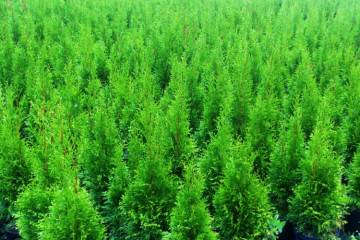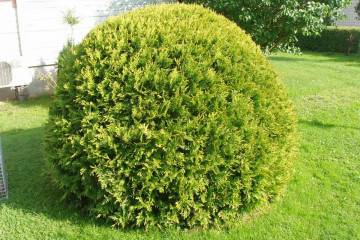Thuja oriental - varieties, description, sizes
Content:
In modern landscape design, thuja is used very often. It is appreciated for its beauty and unpretentiousness. It releases phytoncides, so it is recommended to plant it near houses and cottages. There are many plant species in the group: thuja eastern Aurea, thuja biota, Golden Minaret, etc.
Description of the eastern thuja (Thuja orientalis), or flat-flowered biota (Platуcladus)
China is considered the birthplace of the plant. Thuja has several names that apply to this species. The most common are:
- thuja oriental (in Latin Thuja orientalis);
- flatworm biota (Platуcladus);
- eastern biota (Biota orientalis).
This is an evergreen coniferous tree with a superficial root system, slow-growing, under favorable conditions reaches a height of 18 m, under unfavorable conditions it takes the form of a shrub. The bark is thin, peeling off in strips of various lengths, red-brown in color. The color of the bark of the branches is yellow-red.
The needles of young specimens are acicular, at the age of 2 years, scaly, pressed against the branches. In summer, the color of the needles becomes light green, in winter - brown. Male and female cones are formed on the plant, differing in shape and ripening time.
Male cones (microstrobilae) are smaller (up to 3 mm in length) yellow-green in color, female (megastrobilis) reach 2 cm and have a bluish bloom. In autumn, seeds that do not have wings ripen in female cones.
Species features
The eastern biota is the only representative of the monotypic genus Platypus of the Cypress family. The closest relatives in this family are cypress and juniper.
Varieties of flat-flowered can diversify the landscape of the local area due to the height, color of the crown and its structure.
The 5 main types of thuja include more than 100 varieties. These are the views:
- western;
- eastern;
- Korean
- Japanese;
- folded.
Thuja as a highlight of the garden
Thanks to the unique decorative features, the flat thuja will become a real decoration of the site. Using plants, you can create a hedge. Plant species are perfectly combined with other coniferous representatives, which allows you to create unique compositions.
The plant is responsive to care, easy to form. You can choose the type based on the desired design solution.
Groups of thuja varieties by growth rate, shape and color of the crown
Thuja biota has predominantly green needles. The diameter of the crown can reach 10 m, and the height of the plant is 15 m. Unlike other species, eastern thuja is afraid of frosty winters.
Currently, there are several varieties of cultivated plants of the eastern thuja, the most popular of them are described below.
Tuya Aurea Nana: description and dimensions
This is a dwarf type of decorative thuja with an unusual golden color of the crown. Shows very slow growth. For a year, it is no more than 9 cm.
Yustinka
Dwarf thuja of a columnar shape. In terms of its decorativeness, it differs little from the rest. But this type of biota is the most frost-resistant, undemanding to climatic conditions.
Morgan
Morgan is the most profitable option for landscape design solutions. The variety was bred by scientists in Australia. A characteristic feature is the change in the shades of the needles depending on the season. So, in summer it has shades from emerald to lemon, in winter it becomes orange-red.
Pyramidalis
Pyramidalis is a columnar biota that needs to be planted in shaded areas. This type of plant does not tolerate direct sunlight. Maximum height 4 m.
Golden Minaret
This is an ornamental plant species that is very sensitive to drafts and light. With sufficient sunlight, the crown of the shrub takes on a bright lemon color.
Book
The book is often used by thuja landscape designers for the construction of a hedge. Easy to shape. Differs in compactness. The average plant height is 3 m.
Growing thuja eastern
Thuja responds well to watering, especially sprinkling and irrigation. In the first 1-1.5 months, seedlings should be watered at least 1 time per week. You will need to pour about 10 liters of water under each seedling.
Care consists in timely feeding, loosening the soil, pruning and watering.
The flatworm is fed with cow dung, diluting it in cool water in a ratio of 1:20. A healthy, well-developing plant is fed with manure once every two years. You can also use nutritious mineral mixtures for feeding.
Loosening is carried out in order to avoid soil compaction to a depth of no more than 10 cm. It is better to mulch the trunk circle.
A shaping haircut is needed to create compositions from the period when the biota reaches the age of three. Due to the dense stem, this procedure is not required. Young plants have a pyramidal shape, and with age they become more rounded and lush.
Requirements for climatic conditions
The eastern biota does not tolerate severe winters. It is a thermophilic plant that prefers places well lit by the sun. Thuja feels great in the climatic conditions of the southern regions, but with proper care it tolerates the winters of Central Russia well.
Features of growing thuja in Siberia
The cultivation of thuja in Siberia became possible thanks to the emergence of frost-resistant varieties. These are mainly plants of the western thuja group. Eastern biota in Siberia is rarely used in landscape design, since it is thermophilic.
Frost-resistant varieties require special care, but the undoubted advantage is that the stem is easily formed and does not need frequent pruning. In Siberia, special attention should be paid to feeding and care.
Correct seating and seat selection
Young flat plants are picky about the composition of soils, while mature plants are more unpretentious. To plant seedlings in open ground, you need to prepare the following nutrient mixture:
- turf soil - 2 parts;
- peat - 1 part;
- cut - 1 piece.
Given the superficial location of the roots, the hole should be dug 80 cm deep and 60 cm wide. The bottom of the planting hole needs to be filled with drainage by a quarter. When planting, the root collar is not buried.
Some plant varieties require special planting. For example, Pyramidalis does not tolerate direct sunlight, which negatively affects the color of the needles. The Golden Minaret variety painfully tolerates drafts, therefore, a place for planting these plants should be chosen protected from the winds.
Landing dates
In order for the plant to better adapt to climatic features, the spring period from early April to May is considered a favorable time for planting it.
Thuja can be planted until early September. The later the landing takes place, the less time it takes to acclimatize. The biota planted in the fall will need to be carefully prepared for wintering and a covering material should be applied.
Breeding methods of eastern thuja
Thuja propagates by seeds, but it is very laborious. It will take almost 5 years to wait for the formation of full-fledged seedlings. And this method has only one advantage - from the very beginning, the plant adapts to the soil in which it will grow.
In addition, the biota is propagated by dividing the bush and grafting. For cuttings, shoots of a 2-3-year-old plant are used. Take a process with a heel - a section of the mother tree.
The best option is planting an oriental thuja purchased in a nursery. Before choosing the type of seedling, you need to familiarize yourself with the conditions that you need to create for the plant.
Preparing for the winter period
Before the onset of cold weather, the plants huddle high, sprinkling the trunk near the ground with a layer of peat. The crown is lightly pulled together with a rope and a protective covering is made with a non-woven material.
Instead of agrofibre, you can use spruce branches to cover the thuja. When the snow falls, a snow shelter is formed on the spruce branches.
Placticladus tolerates frosts down to -20 ° С. The mark on the thermometer scale at −25 ° C is a threat to the plant. Thuja is very difficult to tolerate sudden changes in temperature during the winter thaw.
When planning landscape design, the characteristics of each variety are taken into account: features, stem size and height, preference for growing conditions. Subject to these simple rules, the eastern thuja will delight for a long time with delicate greenery and a chiseled shape.
